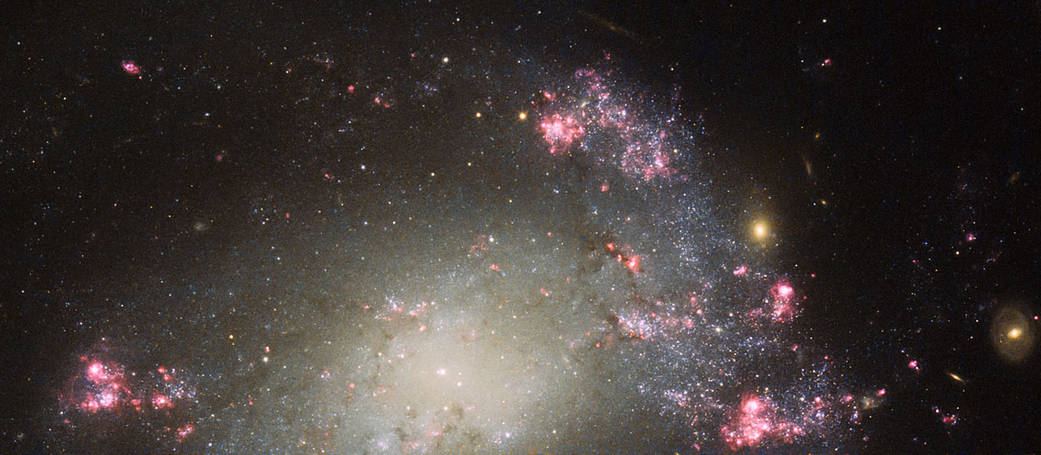A Mess of Stars: NASA Image of the Day
Yet another example of why Hubble is awesome. A beautiful image of dizzying brilliance that puts the immensity of creation in a humbling perspective and should make you wonder at the vast, incomprehensible universe that we are but a small, small part. Of course the first thing I thought of was a big booming voice saying:
“There are those who believe…that life here began out there, far across the Universe…with tribes of humans…who may have been the forefathers of the Egyptians…or the Toltecs…or the Mayans…that they may have been the architects of the Great Pyramids…or the lost civilizations of Lemuria…or Atlantis. Some believe that there may yet be brothers of man…who even now fight to survive–somewhere beyond the heavens!”
But then I’m a bit of a nerd.
Hubble Sees a “Mess of Stars”
Bursts of pink and red, dark lanes of mottled cosmic dust, and a bright scattering of stars — this NASA/ESA Hubble Space Telescope image shows part of a messy barred spiral galaxy known as NGC 428. It lies approximately 48 million light-years away from Earth in the constellation of Cetus (The Sea Monster).
Although a spiral shape is still just about visible in this close-up shot, overall NGC 428’s spiral structure appears to be quite distorted and warped, thought to be a result of a collision between two galaxies. There also appears to be a substantial amount of star formation occurring within NGC 428 — another telltale sign of a merger. When galaxies collide their clouds of gas can merge, creating intense shocks and hot pockets of gas, and often triggering new waves of star formation.
NGC 428 was discovered by William Herschel in December 1786. More recently a type of supernova designated SN2013ct was discovered within the galaxy by Stuart Parker of the BOSS (Backyard Observatory Supernova Search) project in Australia and New Zealand, although it is unfortunately not visible in this image.
This image was captured by Hubble’s Advanced Camera for Surveys (ACS) and Wide Field and Planetary Camera 2 (WFPC2).
Courtesy of NASA.org | Image credit: ESA/Hubble and NASA and S. Smartt (Queen’s University Belfast), Acknowledgements: Nick Rose and Flickr user penninecloud | Text credit: European Space Agency











Andy Garcia says:
Joe says:
Paul Matthew Carr says: